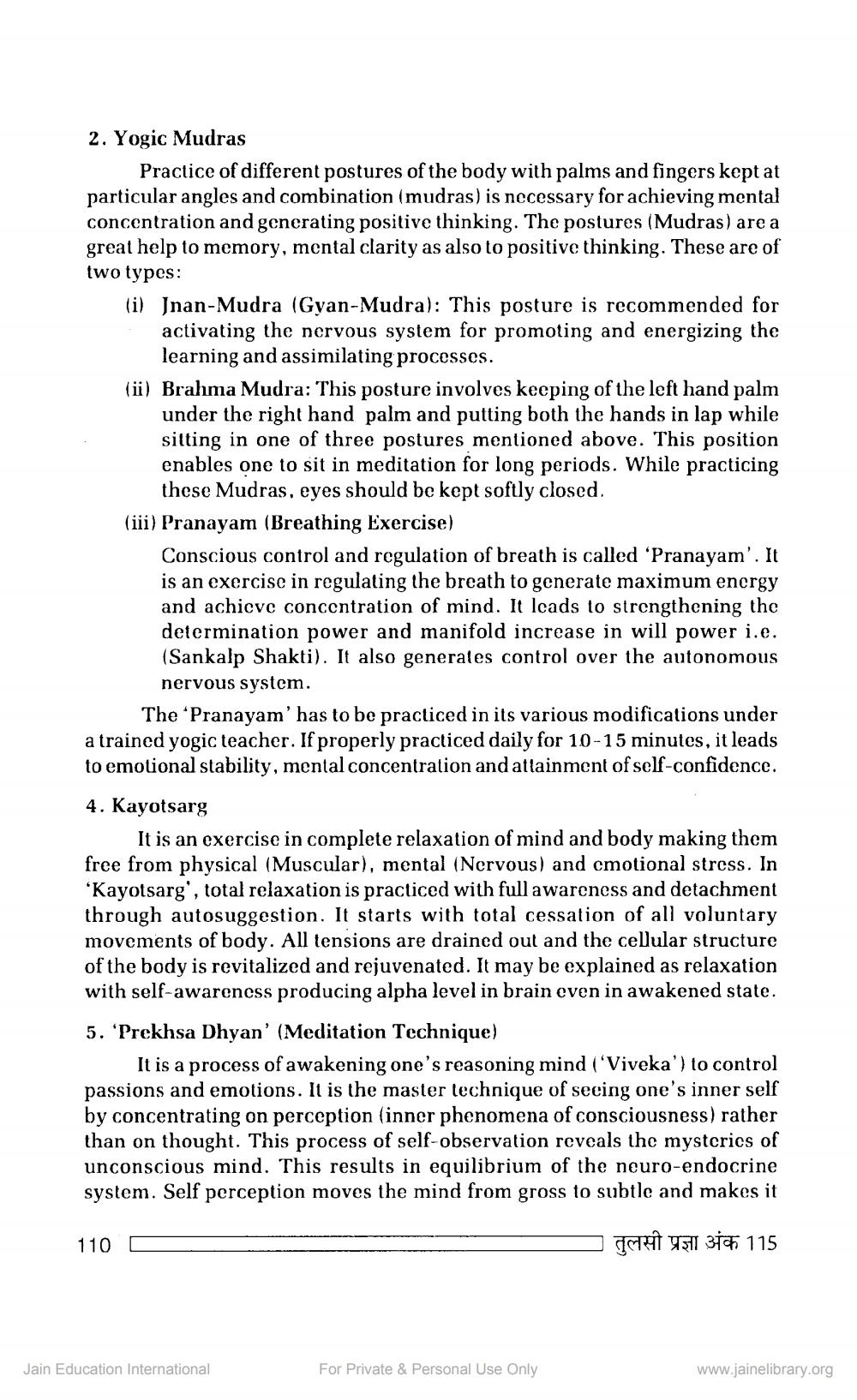________________
2. Yogic Mudras
Practice of different postures of the body with palms and fingers kept at particular angles and combination (mudras) is necessary for achieving mental concentration and generating positive thinking. The postures (Mudras) are a great help to memory, mental clarity as also to positive thinking. These are of two types:
(i) Jnan-Mudra (Gyan-Mudra): This posture is recommended for activating the nervous system for promoting and energizing the learning and assimilating processes.
(ii) Brahma Mudra: This posture involves keeping of the left hand palm under the right hand palm and putting both the hands in lap while sitting in one of three postures mentioned above. This position enables one to sit in meditation for long periods. While practicing these Mudras, eyes should be kept softly closed. (iii) Pranayam (Breathing Exercise)
Conscious control and regulation of breath is called 'Pranayam'. It is an exercise in regulating the breath to generate maximum energy and achieve concentration of mind. It leads to strengthening the determination power and manifold increase in will power i.e. (Sankalp Shakti). It also generates control over the autonomous nervous system.
The 'Pranayam' has to be practiced in its various modifications under a trained yogic teacher. If properly practiced daily for 10-15 minutes, it leads to emotional stability, mental concentration and attainment of self-confidence.
110
4. Kayotsarg
It is an exercise in complete relaxation of mind and body making them free from physical (Muscular), mental (Nervous) and emotional stress. In 'Kayotsarg', total relaxation is practiced with full awareness and detachment through autosuggestion. It starts with total cessation of all voluntary movements of body. All tensions are drained out and the cellular structure of the body is revitalized and rejuvenated. It may be explained as relaxation with self-awareness producing alpha level in brain even in awakened state.
5. 'Prekhsa Dhyan' (Meditation Technique)
It is a process of awakening one's reasoning mind ('Viveka') to control passions and emotions. It is the master technique of seeing one's inner self by concentrating on perception (inner phenomena of consciousness) rather than on thought. This process of self-observation reveals the mysterics of unconscious mind. This results in equilibrium of the neuro-endocrine system. Self perception moves the mind from gross to subtle and makes it
तुलसी प्रज्ञा अंक 115
Jain Education International
For Private & Personal Use Only
www.jainelibrary.org




